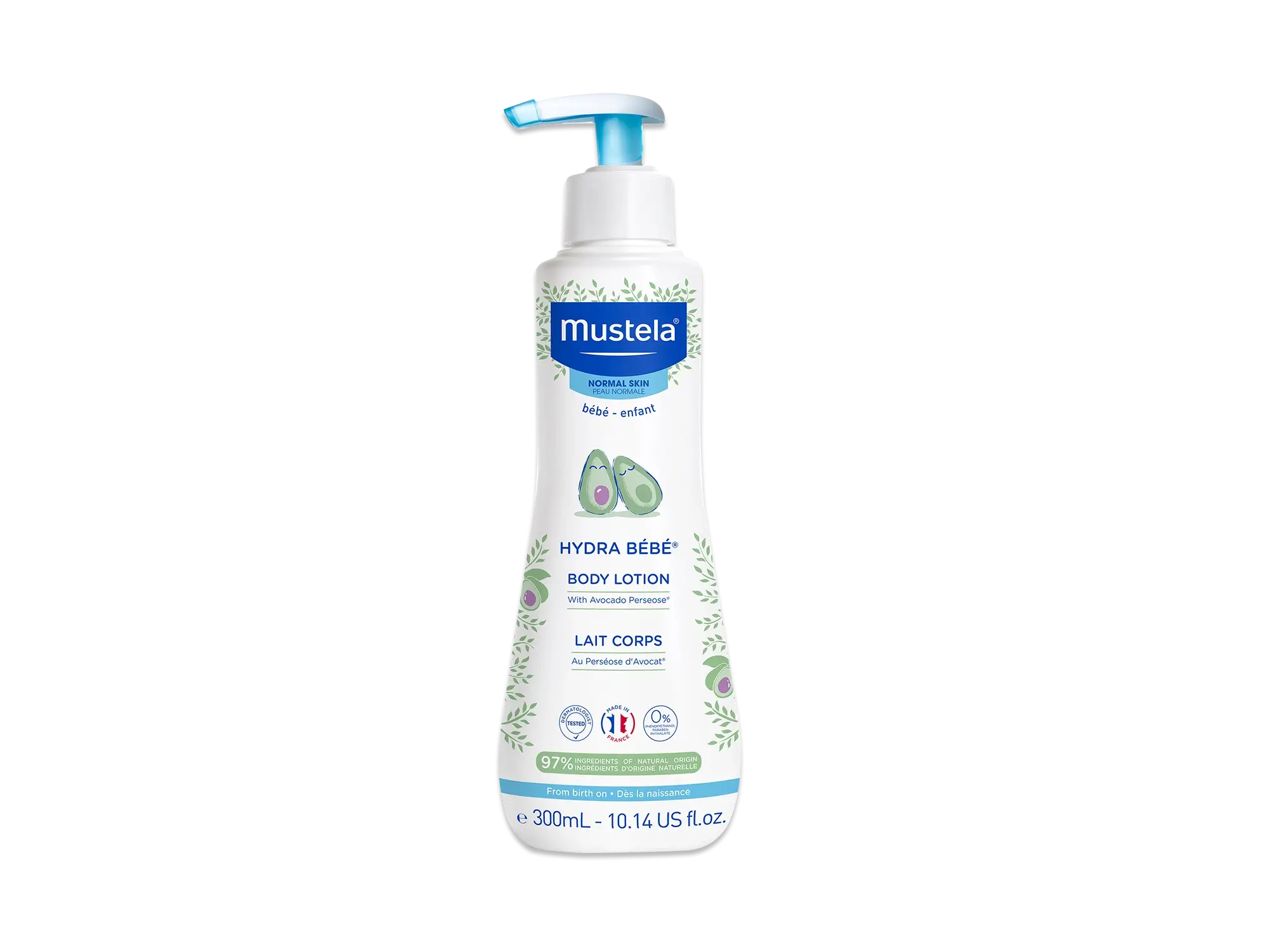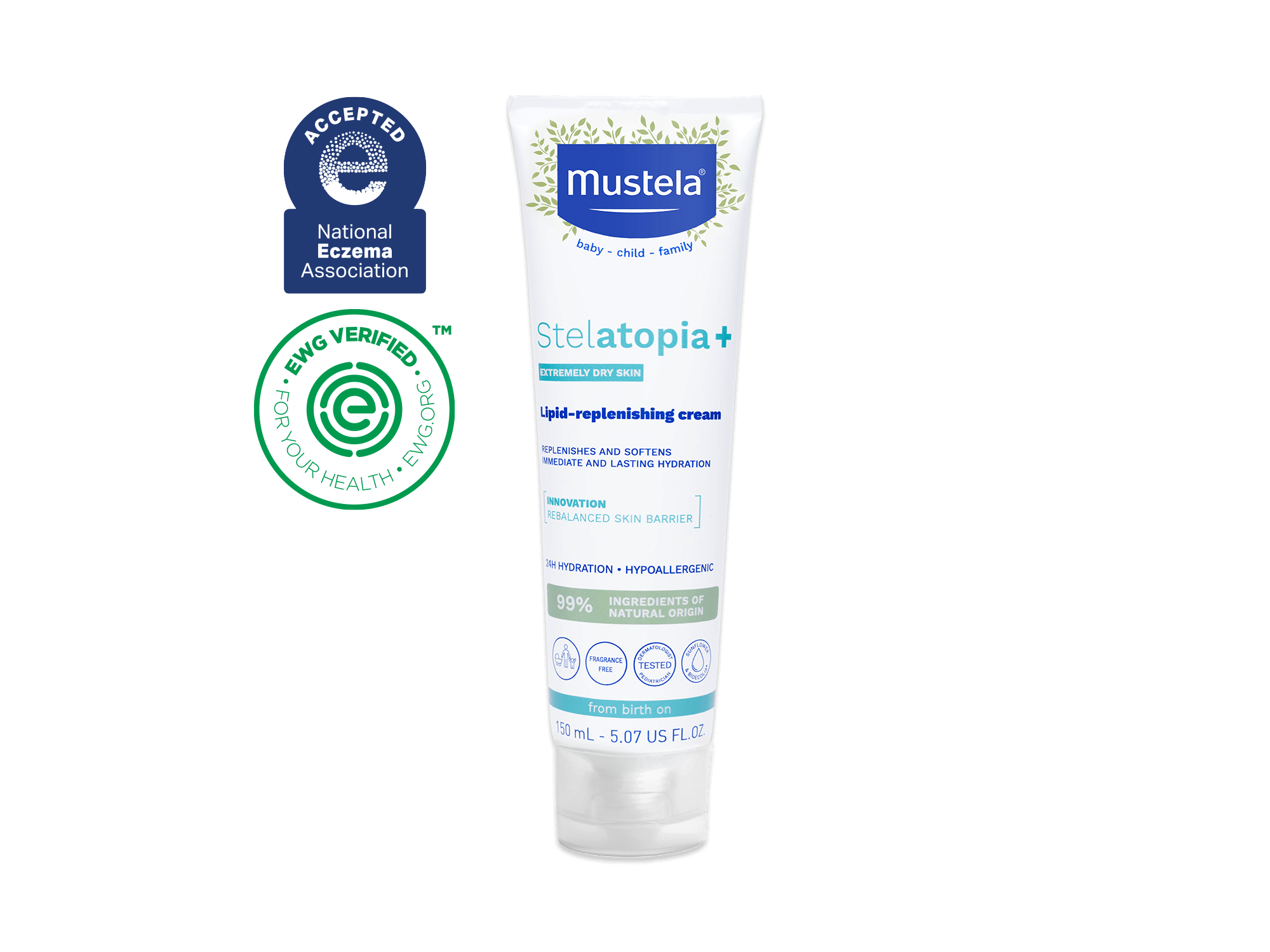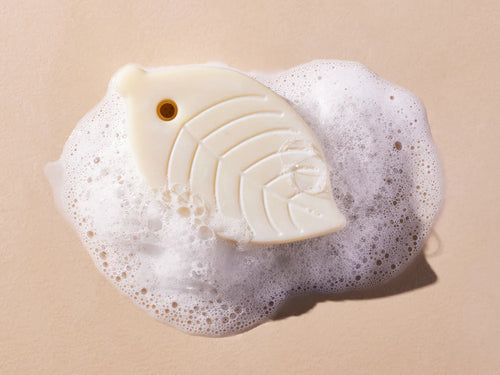The topic of babies sleeping on their stomachs has been around for ages. And if you’re a new parent, the contrasting information out there can be overwhelming.
You’ve probably received lots of advice from your mom or grandma, who swears by allowing babies to sleep on their tummies. However, recent research shows that this is not a safe sleep practice for your little one.
To help ease your mind, we’ll discuss some of the risks involved with allowing babies to sleep on their tummies and what you can do to ensure the safest sleep environment for your little one.
Baby Sleeping On Stomach: Is It Really Unsafe?

The short answer to this question is yes! It is absolutely unsafe for babies to sleep on their tummies before turning one. This includes allowing little ones to sleep on their sides because it's easy for them to roll onto their stomachs from this position.
Why is it so unsafe? In a nutshell, tummy sleeping increases the risk of Sudden Infant Death Syndrome (SIDS).
SIDS is one of the leading causes of death for babies in their first year of life and affects about 3,400 babies in the United States each year. While there may be different contributing factors to SIDS, allowing babies to sleep on their stomachs is a leading culprit.
As parents to tiny humans, one of our most important jobs is to create a safe sleep environment for them. So, where do you begin?
The American Academy of Pediatrics (AAP) released a policy statement in 2016. This statement outlines recommendations for a safe sleep environment and to reduce the risk of SIDS.
These recommendations tell parents to place infants to sleep:
- On their backs
- In a shared room
- On a flat and firm sleeping surface
- In a bassinet or crib that has no soft objects around
"Soft objects" can be anything from pillows and blankets to stuffed animals and loose bedding; they are all suffocation hazards for babies. This means that other than a fitted sheet, your baby’s crib or bassinet should be empty.
Whether you've put your little one on a sleep schedule, or you're allowing them to guide their sleeping hours, remember to always apply these recommendations to both nap times and overnight sleeping.
Other Dangers Of A Baby Sleeping On Their Stomach
SIDs isn’t the only risk of your child sleeping on their stomach. Rebreathing, suffocation, overheating, and a blocked airway could also occur. Let’s look at each one in more detail.
Rebreathing
Some researchers claim that allowing babies to sleep on their tummies can increase the chances of "rebreathing." This is when babies breathe in the air they've exhaled.
The chances of rebreathing also increase when babies sleep on a soft surface or have stuffed animals, bedding, or pillows near their faces. When a baby rebreathes their exhaled air, it lowers the oxygen levels in their body and increases the carbon dioxide levels.
Suffocation
Another danger of belly sleeping is suffocation. If your baby's nose and mouth get blocked, they won’t be able to take in the oxygen they need from the air.
This can happen when a baby sleeps on their stomach and the bedding covers their face or they roll over onto something that blocks their breathing.
Overheating
When babies lie on their tummies, they can get too hot. The mattress pushes against their body and prevents air circulation.
The result is a buildup of heat, which can make your baby uncomfortable and cause them to wake up multiple times during the night. But night wakings aren’t the worst part of overheating. Being too warm has also been linked to SIDs.
Choking On Spit Up
If your baby is a spitter, then you want to be extra careful about allowing them to sleep on their stomach. While it may not be a common occurrence, there is the chance that your little one could choke on spit up if they're sleeping on their stomach.
Their spit can run out of their mouth and create a pool on the mattress or sheet beneath them. Then, when they inhale, they could inhale some of that liquid and start to choke.
It’s Not Worth The Risk
While well-meaning family members may try to give you their own advice, when it comes to sleeping positions for infants, putting your baby to sleep on their back is the only safe option.
If you’re still concerned about their comfort, one of the best ways to keep your little one comfy on their back is by swaddling them. This can relax your baby and keep them feeling snug and secure while they snooze. (More on this a bit later.)
When Can Babies Start Sleeping On Their Stomachs?

As parents, we want our little ones to sleep comfortably. While it can be tempting to give them a stuffed animal or blanket, remember safe sleep guidelines are there to protect your baby. And keep in mind the infant and high-risk SIDS phase doesn’t last forever.
At around the one-year mark, the risk of SIDS drops dramatically in babies who don’t have health problems. This makes it an ideal time to start placing your little one on their stomach (or side) to sleep.
Why does age matter? As babies get older and become mobile, they gain enough strength to roll themselves back to a safe position.
However, little ones do start developing some mobility skills earlier on. For example, at around four months, some babies start rocking from side to side and rolling themselves from tummy to back. By the six-month mark, most babies can roll over in both directions.
We’ll cover what to do if your baby rolls onto their belly while they’re sleeping a bit further down, so keep reading.
Does Your Baby Need To Be Flat On Their Back?
The safest position for your baby is to be flat (not inclined) on their back. While inclined sleepers were popular a few years back, new research shows that your baby is at risk of suffocation if their head slumps forward while they’re inclined more than 10 degrees.
This is called positional asphyxia because the chin-to-chest position can block the airway. Since your baby’s head is so heavy compared to the rest of their body, they may not have the neck strength to hold it upright when inclined. Gravity just pulls it down.
And while this condition may not happen every time you put your baby in an inclined position, it is a potential risk. A study showed that almost 4,000 babies a year die from this condition. Most of those little ones were in an unsafe sleep environment.
Because of the risk of death, sleeping in a swing, stroller, car seat, bouncer, or other inclined surface is unsafe for your baby. So, if your little one falls asleep while inclined, you should transfer them to their safe sleep area as soon as possible.
What If Your Baby Prefers Sleeping On Their Stomach?
Some babies prefer sleeping on their tummies. You’ll know this because they’ll generally fuss less while on their stomach compared to when they’re in other positions.
If you notice this is your little one’s preference, it’s important to still put them to sleep on their backs so they get used to it. After all, their safety is your top priority.
To help encourage your child to sleep on their back, here are a few things you can try:
1) Wrap Your Baby In A Swaddle

Swaddling or opting for a sleep sack may provide your child the comfort they need while asleep. Just keep mobility requirements and safety considerations in mind as you decide what’s best for your baby.
To swaddle your baby, spread a lightweight blanket out on a firm surface and fold down one corner. Then, lay your little one diagonally across, with their head above the fold.
Next, wrap one side of the blanket firmly around their body, going over their arms. Tuck this side of the blanket under your baby's back. Then, fold up the bottom of the blanket, creating a place for their feet.
Finally, tuck the last side of the blanket securely around your baby’s body and over their other arm before tucking the other corner in.
2) Create A Soothing Bedtime Routine
If you’re having trouble encouraging your little one to sleep comfortably on their back, you might want to start a soothing and calming routine to help them settle and enjoy a good night’s rest.
Before starting the routine, you can:
- Dim the lights
- Check the room temperature — it’s recommended that babies sleep in a room between 68° and 72°F
- Ensure that your child’s clothing isn’t causing them to overheat
- Use a white noise machine to help cancel out outside noises (especially when you have older children or pets)
When considering a bedtime routine, choose one that you can consistently follow every night. This will help set the mood for a peaceful night’s sleep.
Start with a gentle bath using our Gentle Cleansing Gel or Foam Shampoo For Newborns to calm your child’s little body down.
We also recommend following this with a massage using our Baby Oil. It’s composed of 99% plant-based ingredients, so it’s gentle enough for newborns with no yucky ingredients. It also has a soothing scent that can comfort and calm babies.
After all that cleansing and massaging, don’t forget to care for their little bottom, too! As you diaper them up for the night, use Mustela Diaper Cream With Olive Oil And Aloe, which moisturizes and soothes your little one’s delicate diaper area.
If your baby has a rash, it can also be extremely uncomfortable and make it challenging for them to get a good night’s rest. Diaper Rash Cream 1 2 3 helps soothe the diaper area and relieve irritation and redness.
Lastly, our daily moisturizer, Hydra Bebe Body Lotion, is packed with jojoba oil, sunflower oil, and Vitamins E and F to leave the skin soft and moisturized.
After they’re all squeaky clean and snoozy, you can opt to read to your baby, breastfeed them, or rock them gently to lull them into slumber. Then, put them gently into their bed on their back.
3) Invest In A Comfortable Mattress
Being flat on your back on a lumpy or unsupported surface is no fun for anyone. If your baby's mattress isn’t firm, it’s no wonder they may prefer sleeping on their tummy.
Make sure you invest in a good quality mattress that provides your little one with the support and comfort they need. By turning their sleeping space into a cozy place, your baby will be able to relax and fall asleep on their back.
Note: While you may prefer the feel of a soft mattress, your little one needs a firm one. They’re much safer sleeping on a firm, flat surface.
4) Let Them Spend More Time On Their Back
Think about how your child is positioned throughout the day. Do they get a chance to spend time on their back when they're awake? Or are they always on their belly when they're down?
While tummy time is important, you want your child to get used to being on their back, too. So try to include some back lying during their active, awake hours.
They can lie on their back while playing with a toy or listening to you read a story. This way, they learn to associate being on their back with pleasant experiences.
5) Stay Nearby At Bedtime
Your presence is comforting to your baby. So have them close by, in a sleeping space of their own. Not only will this make it easier for those nighttime feedings, but it can be reassuring for your baby when they’re learning to stay on their back.
You can pat them and give them a comforting “shh” when they fuss. That way, your baby knows you’re there, which can help keep them on their back until they fall asleep.
6) Give Them A Pacifier

If your baby can't seem to settle down when they're on their back, try giving them a pacifier. This can provide the extra comfort they need to drift off to sleep.
Plus, it's much easier for babies to suck on a binky when they're on their backs. When they roll onto their stomach, it tends to pop out, which little ones want to avoid. Thus, a pacifier may help them stay in the desired position while sleeping.
7) Be Patient
Overall, the goal is for your little one to get used to sleeping on their back. By providing them with enough comfort and security, you can help make this process easier.
Just remember that every child is different and will take time to adjust. So, be patient and trust that your baby will settle into the habit with time and consistent practice.
What If Your Baby Rolls Onto Their Stomach During Sleep?

As mentioned earlier, by about six months, most babies can roll independently onto their stomachs. When this happens, you may put your baby to sleep on their back only to wake up later and find them on their stomach.
And while this sight may initially cause some panic, the good news is you don’t have to worry too much if your little one manages to roll onto their stomach while sleeping. SIDS is significantly lower in children who’ve mastered the ability to flip themselves from back to tummy.
When a child has enough strength to switch positions easily, they can sense trouble and better protect themselves by getting back to a safer position.
It’s important to note here that when you notice that your little one is becoming more mobile, it’s time to stop swaddling.
While the swaddling technique helps keep infants comfortable and protects them from their natural startle reflex, when you have a mobile child, continuing to swaddle them may be dangerous.
At this stage, they could flip from their back to their stomach and not be able to flip themselves back over because they’re snug in the swaddle material.
Use a sleep sack if you need extra layers to help your baby stay warm on a cool night. These wearable blankets don’t restrict your child’s movement, so they can easily shift positions if needed.
Note: It’s important to continue placing your little one on their back to sleep until their first birthday. However, if your little one can roll over on their own, it’s OK to leave them in this position.
What If Your Baby Is Getting A Flat Spot On Their Head?
Some parents worry that their baby sleeping on their back will cause them to get a flat spot on their head. This is called positional plagiocephaly or flat head syndrome.
While babies who sleep in the same position all the time are more likely to develop this condition, it doesn’t mean they will necessarily get one if they sleep on their back.
If you're concerned, here are a few things you can do:
- Tummy time: Let your baby have at least 30 minutes of tummy time each day.
- Swap sides: Each week, put your baby's head toward a different end of the crib. This will change the pressure points on their head.
- Hold upright: Instead of resting your child's head on your arm as you cradle them, gently support the neck and head in an upright position.
- Avoid extended time in seats: Any seat that puts extra pressure on the back of your child's head, such as a car seat or bouncer, should only be used for short periods of time.
- Massage: Have your child rest on their tummy while you gently massage their neck and shoulders with our Melting Massage Balm. This can relax tight muscles and encourage your child to position their head differently.
- Headwear: If your child is developing a flat spot, talk to your doctor about using a soft helmet or corrective headband.
Your child’s doctor may have other suggestions as well, so be sure to speak to them about your child’s development.
Back Is Best!
As we’ve seen from research, allowing babies to sleep on their stomachs contributes to SIDS and other hazards during the first year of their life. The best way to ensure safe sleep for your little one is to place them on their back to sleep.
Even if your baby seems to like being on their tummy, reserve this position for snuggles with mom or dad, and always place them on their back when you put them down to sleep.
We know that following all these rules may be challenging, especially when it’s late at night and you are sleep-deprived. But just hang on to the fact that the newborn phase will soon pass, and you won’t have to worry about all of these concerns forever.
For more on newborn care and the exciting stages your little one will go through, check out our blog!


















